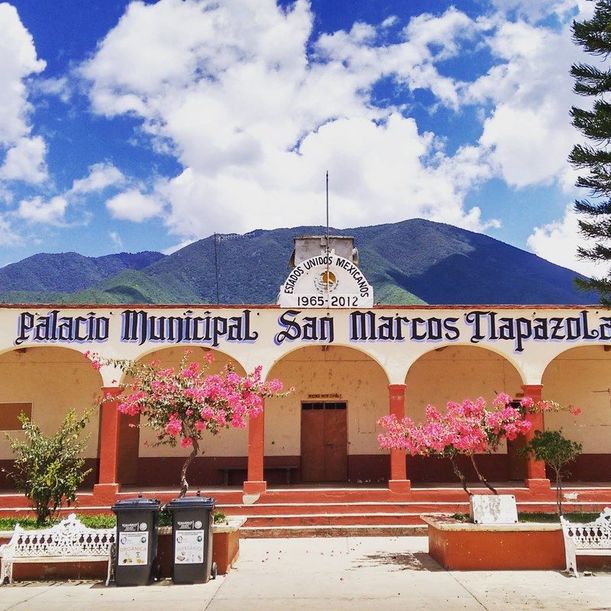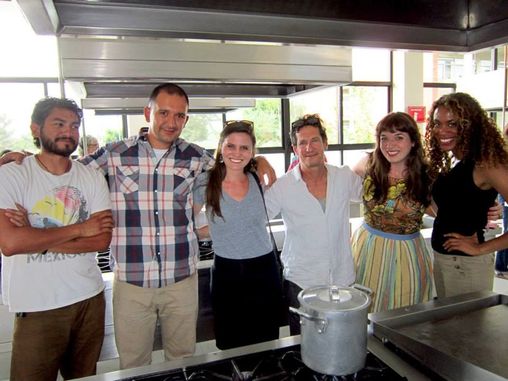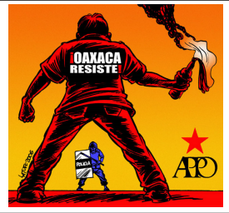- Home
- About
-
Lessons
-
Teaching with Music
>
- Song warm-up lesson plans, setup, procedure, and exams
- How to teach "Tú sí sabes quererme" by Natalia Lafourcade
- How to teach "La Carretera" by Prince Royce
- How to teach "Latinoamérica" by Calle 13
- How to teach "Prohibido Olvidar" by Rubén Blades
- How to teach "Traidora" by Gente de Zona
- How to teach "La Bicicleta" by Shakira and Carlos Vives
- How to teach "Culpa al Corazón" by Prince Royce
- How to teach "Déjà Vu" by Prince Royce and Shakira
- How to teach "Amor de Mis Amores" by Natalia LaFourcade
- How to teach "Despacito" by Luis Fonsi and Daddy Yankee
- Teaching with TPRS >
- Teaching with Tech >
- Teaching with Film >
- Teaching Social Justice >
-
Teaching with Music
>
-
Service Learning
-
Travel
- Resources
- Tutoring
- Blog
- Contact
Resources for teaching students about the Oaxacan Uprising of 2006
¡Hola amigos! Today I'd like to share a few resources with you that are close to my heart. One of the most charming places I've traveled is the state of Oaxaca, and as you can see by my earlier blog post, I'm quite enamored with this Mexican state. I first visited Oaxaca when I was 19, and it has captured by attention ever since.
In my second year teaching in Baltimore, I applied to attend the NEH (National Endowment of the Humanities) Mesoamerican Institute, taking place in Oaxaca, Mexico that summer. I was lucky enough to be able to join this outstanding group of twenty educators from across the United States for the month of July to learn about the continuation of Mesoamerican culture throughout Oaxaca.
Due to the inspiring instruction given by Dr. Stephanie Wood and Dr. Robert Haskett, I was able to create a plethora of resources for the high school Spanish classroom that center around the rich cultural heritage of Mesoamerican culture in Oaxaca.
In the reading I created,"Tengan Puestos Los Ojos en Oaxaca", students will learn about the 2006 uprising in Oaxaca that centered around the teacher protests for better school funding.
This engaging and comprehensible reading can be used for Spanish I or II, and can be accessed at the following link:
This engaging and comprehensible reading can be used for Spanish I or II, and can be accessed at the following link:
When teaching students a comprehensible lesson with a social justice theme, I begin with a standard routine so students don't feel overwhelmed by any new vocabulary they may encounter.
First, students define the words at the top of the page. I begin by using TPR actions to teach the words and phrases, and then give students time to write the definitions of the phrases.
Second, I give students five minutes to silently read through the passage, with the instruction to underline cognates and circle any new or unknown words.
Third, we define the words that students circled in the reading as a group, and students annotate the meaning of these words in their reading.
Fourth, the students and I read the passage as a group in a chorus, to teach students inflection and pacing while reading aloud. This also helps to build student confidence in reading in front of their peers.
Fifth, students complete the "Airplane Reading" segment of the reading, which consists of students reading together in rotating pairs. Please see my post on the "Airplane Reading" method if you are unfamiliar with the term.
Sixth, after students have completed the "Airplane Reading" segment, students answer the comprehension questions in Activity 2, forming full sentences and working with a partner.
Finally, students describe what they see in the photos and paintings provided in Activity 3, by forming full sentences to describe what they see. Each sentence should start with the phrase "Veo que hay...".
Enjoy!
First, students define the words at the top of the page. I begin by using TPR actions to teach the words and phrases, and then give students time to write the definitions of the phrases.
Second, I give students five minutes to silently read through the passage, with the instruction to underline cognates and circle any new or unknown words.
Third, we define the words that students circled in the reading as a group, and students annotate the meaning of these words in their reading.
Fourth, the students and I read the passage as a group in a chorus, to teach students inflection and pacing while reading aloud. This also helps to build student confidence in reading in front of their peers.
Fifth, students complete the "Airplane Reading" segment of the reading, which consists of students reading together in rotating pairs. Please see my post on the "Airplane Reading" method if you are unfamiliar with the term.
Sixth, after students have completed the "Airplane Reading" segment, students answer the comprehension questions in Activity 2, forming full sentences and working with a partner.
Finally, students describe what they see in the photos and paintings provided in Activity 3, by forming full sentences to describe what they see. Each sentence should start with the phrase "Veo que hay...".
Enjoy!
|
This website is a participant in the Amazon Services LLC Associates Program, an affiliate advertising program designed to provide a means for us to earn fees by linking to Amazon.com and affiliated sites.
|
- Home
- About
-
Lessons
-
Teaching with Music
>
- Song warm-up lesson plans, setup, procedure, and exams
- How to teach "Tú sí sabes quererme" by Natalia Lafourcade
- How to teach "La Carretera" by Prince Royce
- How to teach "Latinoamérica" by Calle 13
- How to teach "Prohibido Olvidar" by Rubén Blades
- How to teach "Traidora" by Gente de Zona
- How to teach "La Bicicleta" by Shakira and Carlos Vives
- How to teach "Culpa al Corazón" by Prince Royce
- How to teach "Déjà Vu" by Prince Royce and Shakira
- How to teach "Amor de Mis Amores" by Natalia LaFourcade
- How to teach "Despacito" by Luis Fonsi and Daddy Yankee
- Teaching with TPRS >
- Teaching with Tech >
- Teaching with Film >
- Teaching Social Justice >
-
Teaching with Music
>
-
Service Learning
-
Travel
- Resources
- Tutoring
- Blog
- Contact



